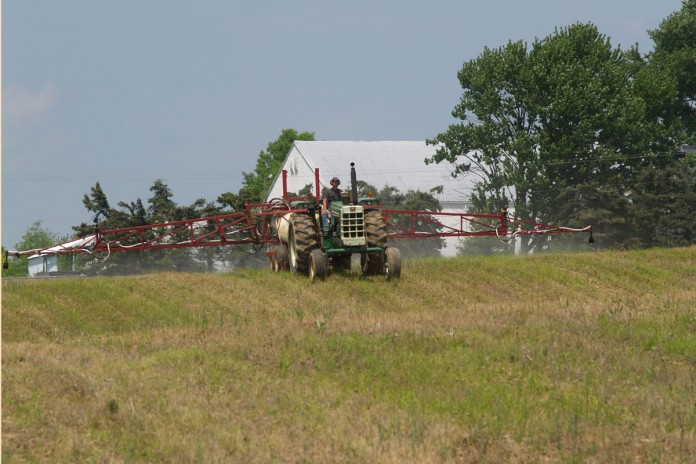UNIVERSITY PARK, Pa. — Farmers should take extra precautions so drifting herbicides do not create unintended consequences on neighboring fields and farms, according to agricultural researchers.
Recently, researchers found a range of effects — positive, neutral and negative — when they sprayed the herbicide dicamba on old fields — ones that are no longer used for cultivation — and on field edges, according to J. Franklin Egan, research ecologist, USDA-Agricultural Research Service.
He said the effects should be similar for a related compound, 2,4-D.
Variable, but…
“The general consensus is that the effects of the increased use of these herbicides are going to be variable,” said Egan. “But, given that there is really so much uncertainty, we think that taking precautions to prevent herbicide drift is the right way to go.”
Farmers are expected to use dicamba and 2,4-D on their fields more often in the near future because biotechnology companies are introducing crops genetically modified to resist those chemicals.
From past experience, 2,4-D and dicamba are the herbicides most frequently involved in herbicide-drift accidents, according to the researchers.
Grasses OK
Because the herbicides typically target broadleaf plants, such as wildflowers, they are not as harmful to grasses, Egan said.
In the study, the researchers found grasses eventually dominated the field edge test site that was once a mix of broadleaf plants and grass. The old field site showed little response to the herbicide treatments.
Herbicide drift was also associated with the declines of three species of herbivores, including pea aphids, spotted alfalfa aphids and potato leaf hoppers, and an increase in a pest called clover root curculio, Egan said.
Crickets, bees OK, too
The researchers found more crickets, which are considered beneficial because they eat weed seeds, in the field edge site.
The researchers did not see a drop in the number of pollinators, such as bees, in the fields. However, the relatively small size of the research fields limited the researchers’ ability to measure the effect on pollinators, according to Egan.
“That may be because pollinators are very mobile and the spatial scale of our experiment may not be big enough to show any effects,” Egan said.
Recommendations
Farmers can cut down on herbicide drift by taking a few precautions, according to Egan. They can spray low-volatility herbicide blends, which are less likely to turn to vapors, and use a nozzle design on the sprayer that produces larger droplets that do not easily drift in the wind.
Egan also recommended that farmers follow application restrictions printed on herbicide labels and try to spray on less windy days when possible.
The tests were conducted on two farms in Pennsylvania. One field edge site was located near a forest and alfalfa field. The old field was an acre plot near Penn State’s Russell E. Larson Agricultural Research farm.
STAY INFORMED. SIGN UP!
Up-to-date agriculture news in your inbox!











